Ten years of research, innovation and collaboration: the Graphene Flagship and the 2DM community
The Graphene Flagship was funded to ensure that Europe would maintain its lead in graphene research and innovation following the scientific breakthrough of graphene’s isolation at the University of Manchester. The European Commission launched the unprecedented long-term and large-scale Flagship research initiatives to tackle major challenges in science and technology, bringing positive changes that benefit society and the economy and advance European leadership in technology and industry. A decade on, we are proud to say that the Graphene Flagship has delivered on its promise. The clearly achieved objectives within scientific excellence, as well as societal and economic impact are detailed inside these pages.
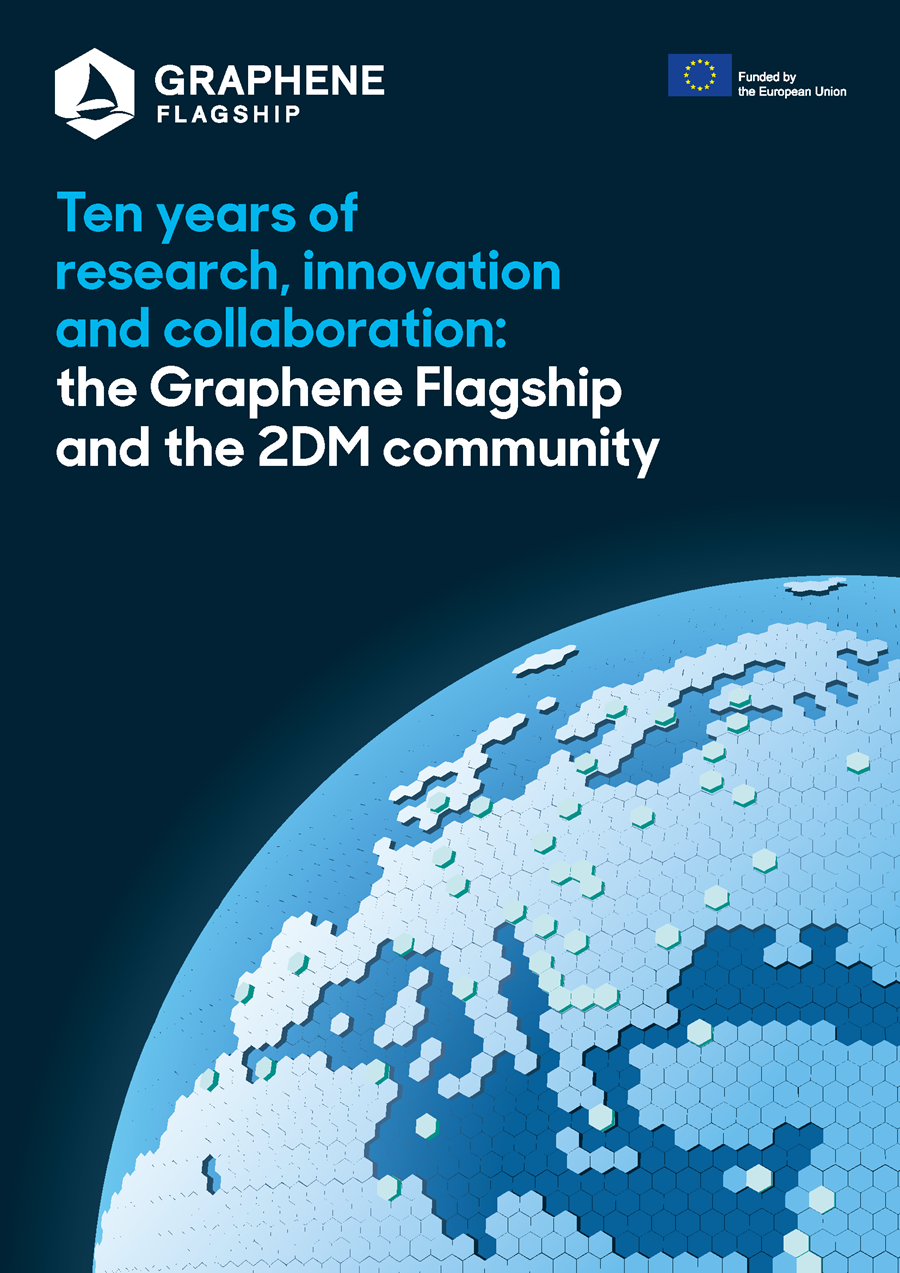
Read the full Ten years of research, innovation and collaboration: the Graphene Flagship and the 2DM community deliverable
In 2011, when the Coordination Action for Graphene-Driven Revolutions in ICT and Beyond (GRAPHENE-CA) began, the European Commission (EC) made its most ambitious investment in the future of 2D materials. GRAPHENE-CA prepared the ground for the Future and Emerging Technologies (FET) Flagship Initiative ‘Graphene-driven revolutions in ICT and beyond’ (GRAPHENE), a €1 billion research project, spanning ten years. At this stage, much of the preparation centred on the material – graphene – something which was high-risk but that needed to be brought to market. Alongside the detailed technical planning of the research and innovation actions which would take place over the next ten years, there was careful consideration of how to create a new ecosystem and infrastructure for impactful growth of graphene and 2D materials in Europe. To bring graphene out of the lab and into the fab and close the large gap between academic success and market breakthrough, the project would need to reduce risk and put into place new structures which could foster long-lasting research, innovation and collaboration.
In 2014, as the Graphene Flagship was launching its ramp-up phase in the Seventh Framework Programme (FP7), a Commission Staff Working Document1 on the FET Flagships was published, citing the following objectives for the Graphene Flagship:
- Establish Europe as a global leader in the field of graphene research, attracting talent and establishing collaborations across the globe, while at the same time acting as a centre of gravity for other, like-minded initiatives in Europe and beyond.
- Develop new talents and skills – including the education of hundreds of researchers in the next generation of materials science – while nurturing creativity in order to attract the best minds in Europe and beyond.
- Create a long-lasting research structure in Europe which fosters and sustains collaboration beyond the project’s duration, while creating synergies with national and regional activities and contribute to the completion of the ERA.
- Deliver a significant impact on competitiveness and society to bridge the gap between fundamental research and innovation, facilitate long-term collaboration between academia and industry leading to an efficient translation of science to concrete innovation opportunities while addressing societal challenges.
Now, nearly ten years after the publication of the Staff Working Document, and as will be demonstrated throughout this report, the Graphene Flagship and its five successive projects (GRAPHENE, GrapheneCore1, GrapheneCore2, GrapheneCore3 and the 2D Experimental Pilot Line) has achieved, and in some cases exceeded, the above objectives. The Key Performance Indicators of the project have shown not only the high-quality of the Graphene Flagship’s research and its researchers but have gone well beyond what was initially expected in terms of outputs. The cutting-edge activities and unique collaborations between academia and industry, combined with the community building events such as Graphene Week, Graphene Study and numerous industry outreach events, have indeed produced a network of highly skilled and well-trained researchers who will lead the way in the coming decades of 2DM research and innovation. The new structures made possible by the Graphene Flagship, such as cross-cutting support functions in research management; innovation support; validation, standardisation and roadmapping activities; dedicated Health and Environment work; and countless others, have created a community that will outlast the project – as evidenced by the establishment of numerous related initiatives and collaborations which would not have existed without it. Finally, the Graphene Flagship has left a measurable impact, not only on the research community and industrial innovation, but also on the society and economy of Europe, via the creation of jobs, career opportunities and contributions to sustainable development.
The “Evaluation study of the European framework programmes for research and innovation for excellent science” published by the European Commission in 2023 included a case study on the Graphene Flagship with positive results. The study contained policy recommendations stemming from the project, including the suggestion of continued long-term research funding for projects such as the Flagships, allowing for flexibility in long-term research, and risk reduction. While the Graphene Flagship’s form in Horizon Europe differs from Horizon 2020, the framework developed over the ten years of the project will have a lasting impact on 2D materials research that will continue within and outside of the Graphene Flagship initiative. The structures created provide a blueprint for how to conduct research over a long period of time while reducing the risks that may otherwise slow down or derail innovation.
In terms of pure numbers, the Graphene Flagship has had an incredible impact on science in its first decade. The project’s impact is easily seen in the products, prototypes and spin-offs described in this report. In our assessment, the Graphene Flagship has had a major effect on collaboration in the 2D materials community – from academics to industry – as it has helped to shape this emerging ecosystem in Europe. The time, the networks, the infrastructure and the innovation of the Graphene Flagship has indeed proven that the project has had a good return on investment for Europe, an investment that will continue to grow for years to come.
The Graphene Flagship has proven to be effective in delivering excellent science and innovation. It has furthermore led to the creation of lasting eco-systems proven to function well and intended to continue beyond H2020 and Horizon Europe (Graphene Flagship, 2022).”
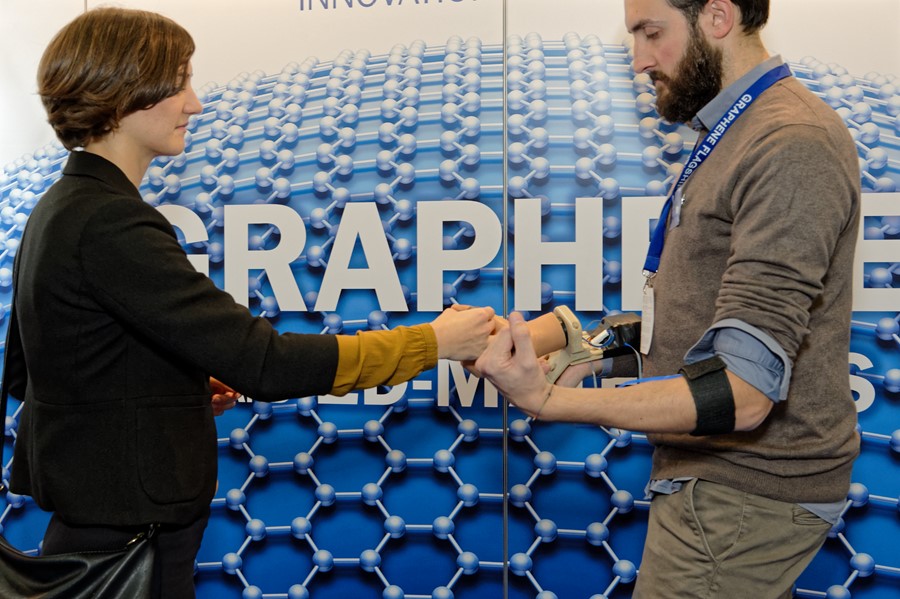
Graphene is strong: The Graphene Flagship has facilitated the creation of a European 2DM community with over 170 partners and more than 90 associated members in 21 countries.
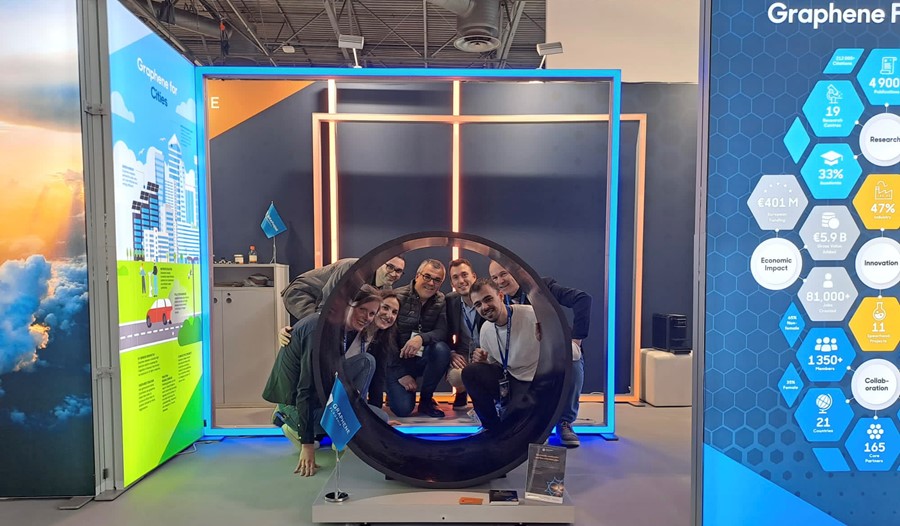
Graphene is conductive: The Graphene Flagship has enabled lightning-fast technology transfer from academia to industry helping to launch 20 spin-off companies, 108 products and 387 patent applications (84 of which have already been granted).
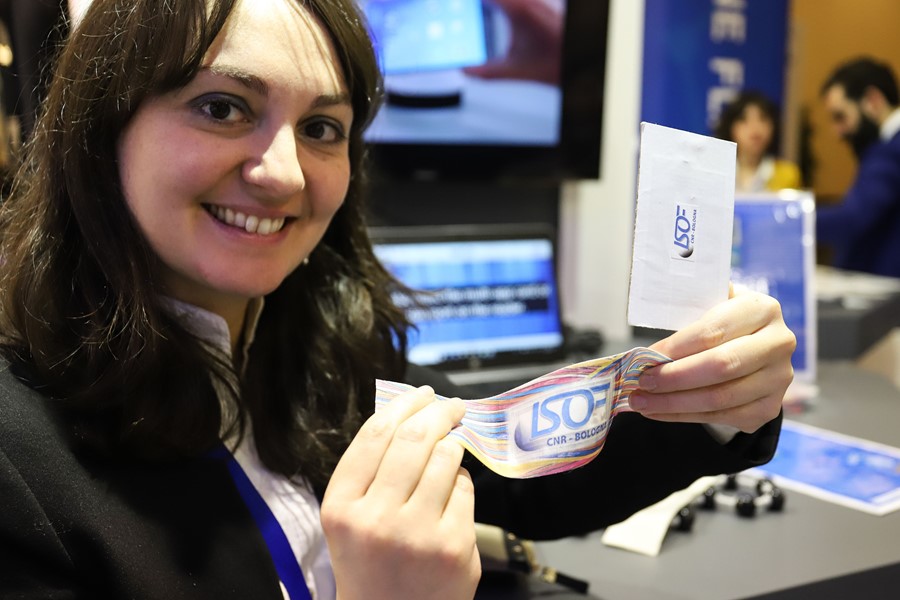
Graphene is flexible: The Graphene Flagship is helping Europe to create a resilient and sustainable 2DM ecosystem. Graphene can replace scarce materials and reduce Europe’s reliance on outside suppliers.
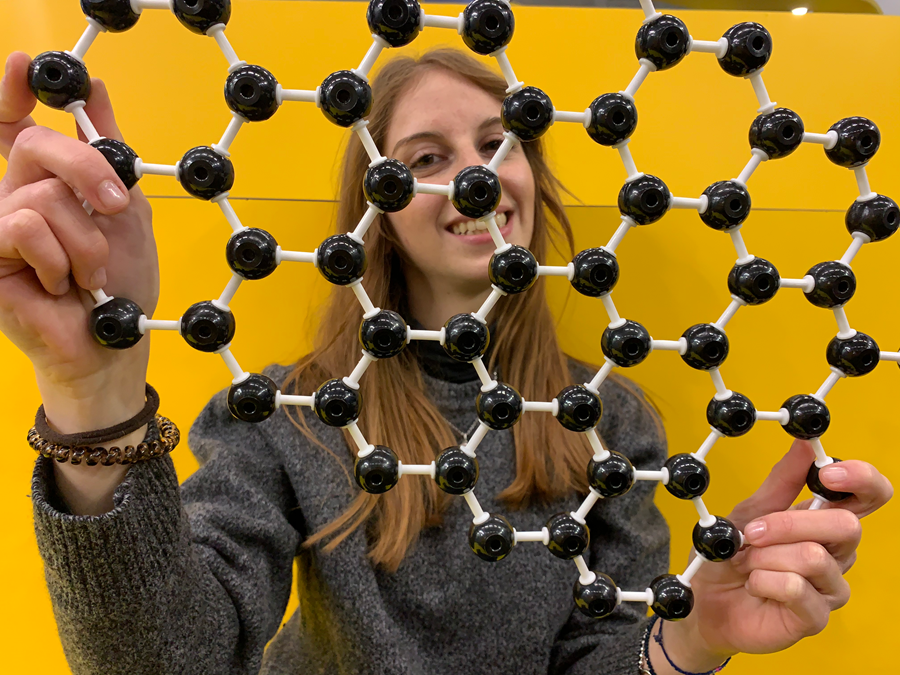
Graphene is transparent: The Graphene Flagship facilitates knowledge transfer through its events, early career education initiatives and business development activities.
Sailing into uncharted waters
The future for graphene and 2D materials in Europe looks bright as the seeds sown over the past decade are growing, and still more are being planted. As the Graphene Flagship initiative sails on into Horizon Europe with a dozen new projects leading the way, the next big steps are engaging with independent, industry-led initiatives such as the 2D Materials Industry & Innovation Consortium (2DMIC).
2DMIC is set to boost the European 2DM industry’s competitiveness and economic growth, and support implementation of 2DM technology by EU industrial sectors for the benefit of EU economy and society. The aim is to establish a business-driven association to push an industrial framework of 2DM in Europe and bring together large industrial companies, SMEs, start-ups and investors to boost innovation with a focus on high TRL industrial R&D. This will enable European companies to accelerate their deployment in the EU market and have a direct impact in the growth of the field. Graphene Flagship partners have been engaged in this association from its inception, and it will be a key stakeholder as 2D material-enabled technologies continue to enter the market.
The planning by the European Commission for a Public Private Partnership on innovative materials further confirms the importance of the research and development that has taken place over the last ten years. This significant investment in the industrialisation of 2D materials will take graphene even further out of the lab and into established and emerging markets in Europe.
At the same time that these ambitious, industry-focused initiatives are launching, the projects which will continue under the umbrella of the Horizon Europe Coordination and Support Action, GrapheneEU, will benefit from the robust infrastructure for research, innovation and collaboration created by the Graphene Flagship.
Read the full deliverable: Ten years of research, innovation and collaboration: the Graphene Flagship and the 2DM community
Reference
1. SWD(2014) 283 final of 16.9.2014 – “FET Flagships: A novel partnering approach to address grand scientific challenges and to boost innovation in Europe”. Accessed: https://era.gv.at/public/documents/2254/FETFlagshipsStaffWorkingDocument-Sep.pdf




